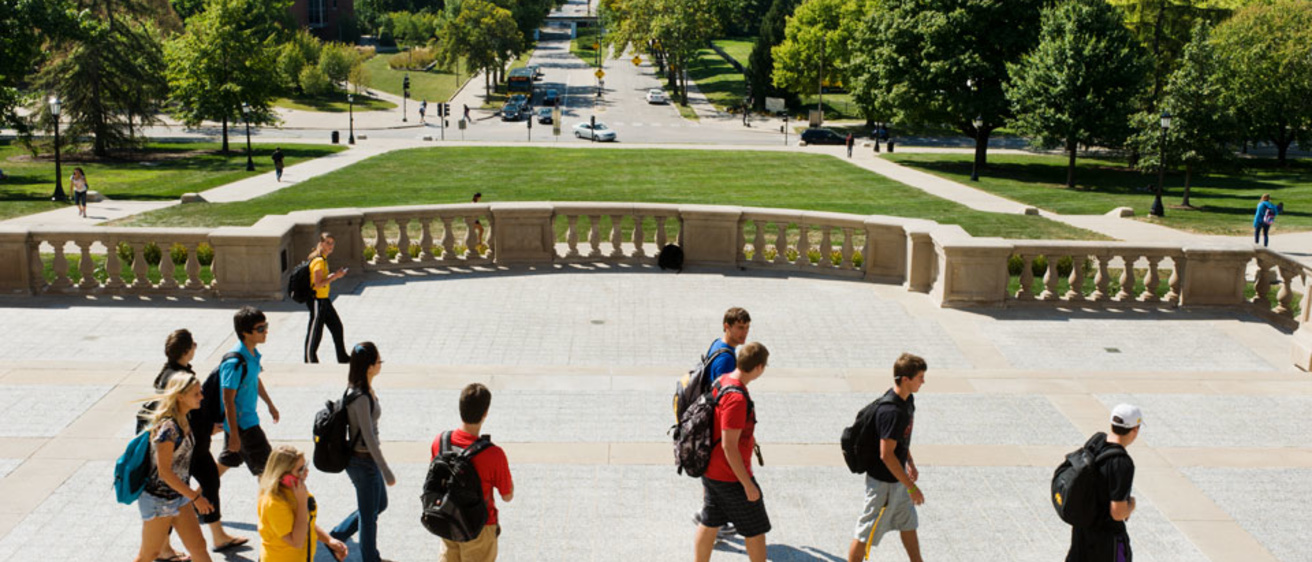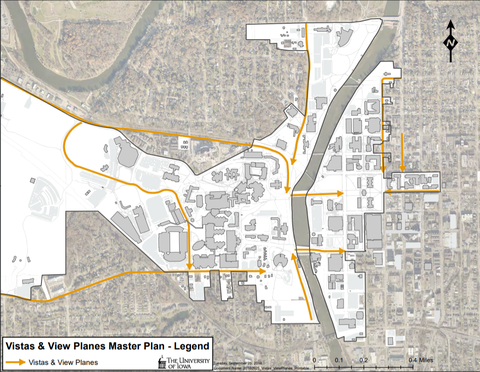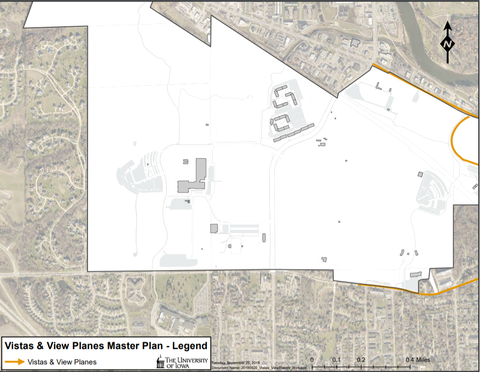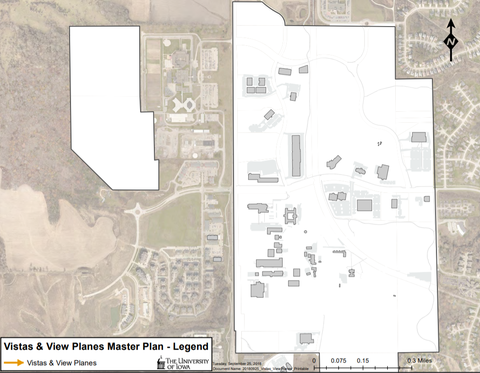Creating and protecting picturesque viewsheds and vistas is fundamental to strengthening the overall ambiance of the University of Iowa campus. These scenic vantage points not only leave a memorable mark in the minds of all who enter campus, but provide visual wayfinding clues that improve the overall safety of campus. When strategically planned and coordinated with iconic architecture and landscape features, vistas and viewsheds will strengthen image, communicate one’s whereabouts, and provide a sense of place throughout the campus.
View corridors are typically planned openings in the built environment that allow views of scenic vistas and viewsheds. Scenic viewsheds and vistas include, but are not strictly limited to views of:
- Scenic landforms and ridges
- Rivers, streams, and their adjacent shorelines
- Significant rock outcroppings or other unique geologic features
- Large stands of mature trees or unique specimens
- Visually prominent vantage points to historic buildings/ sites
The preservation of viewsheds to natural landforms, vistas, and historic panoramic views to prominent buildings such as Old Capitol, are vital to the quality, safety, legacy, and comfort of our campus.
Goals and Objectives
- Strengthen strategic views of iconic physical elements within the campus-built environment.
- Use a variety of visual cues of unique campus elements to improve campus wayfinding.
- Maintain existing views of Old Capitol from all parts of campus.
- Create open visual corridors to the Iowa River to improve presence and engagement of the river.
- Preserve and protect the aesthetic character of natural landforms and historic/culturally significant elements within the built environment.
- Balance the need to develop the campus with creative ways which will improve views and permanently protect scenic vistas and viewsheds.
- Establish design guidelines that support preservation and enhancement of vistas and viewsheds. This will require a visual assessment to identify the campus community’s assets which will highlight a unique overall quality of scenic beauty, scale, texture and form.
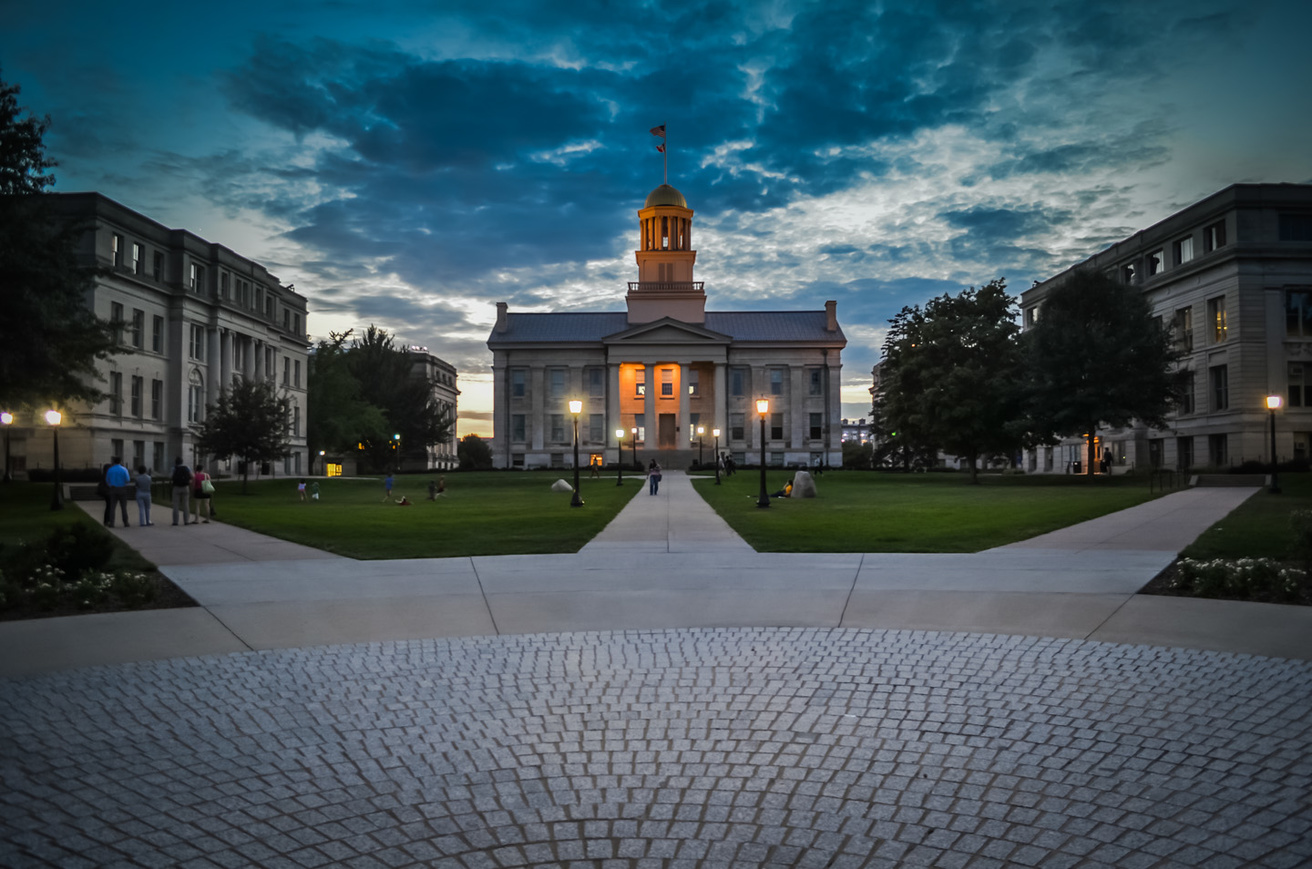
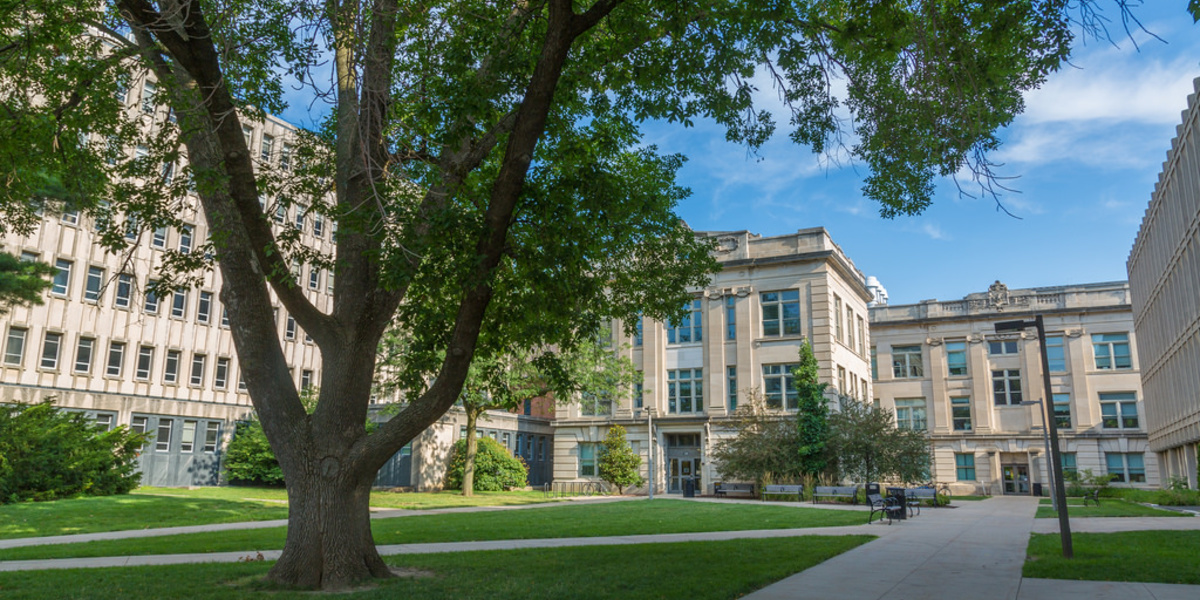
Strategies
- Identify and strengthen specific roadways as mechanisms to provide scenic vistas or panoramic views. Use vegetation as architectural accents to shape the sight lines leading to the feature being emphasized.
- Take advantage of the campus topography. Highlight the crest of hills as focal vantage points for panoramic viewing.
- Take advantage of large open areas to identify unique and distinct landscape features. An open field can provide an important visual focus for stands of trees, stone walls, fences, historic structures, etc.
- Provide visual linkages to waterways (rivers, streams, or ponds) to identify special features within the campus. In addition to their use as destinations, waterways will also be key visual corridors within the campus structure.
- Emphasize the diverse places of culture on campus. Use vistas and viewsheds to bring emphasis to specific settings and locations marking significant buildings, monuments, exterior art, landscapes, and historical occurrences within the campus environment.
- Physical structures will be strategically placed to create views. Building edges, massing, heights and spacing will create an effective way of preserving and creating scenic vistas.
- Create a scenic buffers between developed areas and the natural surroundings. Use vegetation or earth berms to effectively screen unattractive land uses when necessary.
- Establish buffer zones adjacent to historic sites to protect viewsheds to these structures.
- Assure linear views have lines of sight to strategic focal points. Use buildings, walls, and tree canopies as framing elements. Terminating vistas will typically feature significant buildings or spaces.
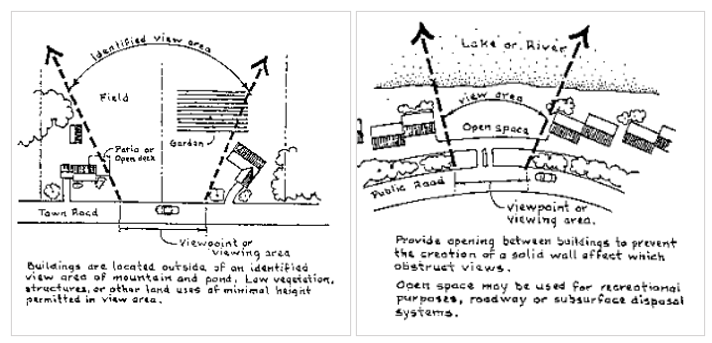
Vistas and Viewsheds PDF
